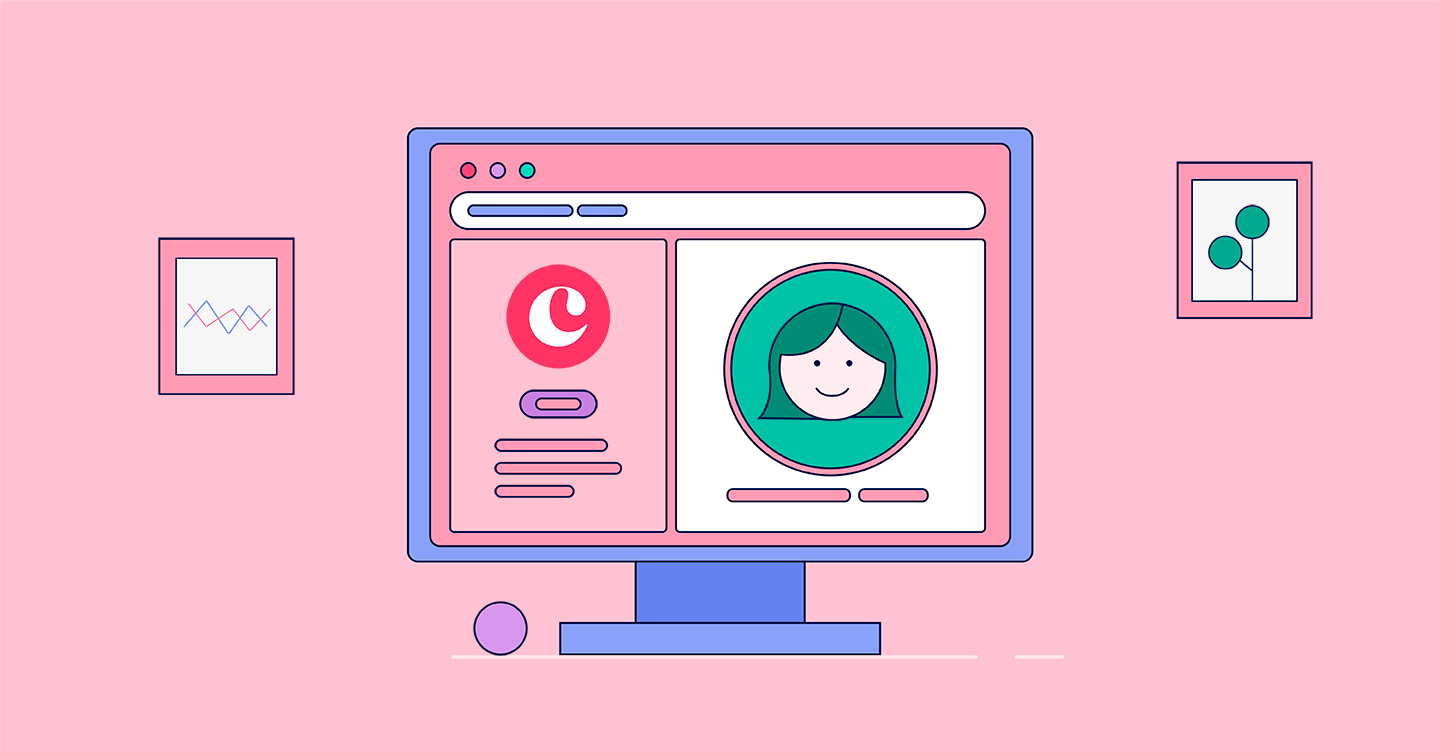Michelle Lee
Customer Enablement Manager
If you’re struggling to keep customers coming back, your business might be in big trouble down the road.
That’s not the only reason to keep your customers around either—there’s plenty of research that suggests that it’s significantly cheaper to keep existing customers than landing new ones.
But how can you make sure you’re not losing customers every month—especially when there’s so much competition out there?
At the end of the day, customer retention boils down to experiences and value—they’re linked. You can have a great experience with a company’s people, but if the product doesn't provide the value, you’ll likely leave. This goes for the opposite scenario too, though getting value usually can outweigh a (mildly) bad experience.
On the surface, this might sound like a tall order. But once you take the time to understand what your customers really want and how you can deliver those things, you’ll be on a path to getting them to stick around longer (and spend more money on you).
Let’s take a look at five tips to keep your customers coming back:
1. Study customers who are already coming back
Your best, most satisfied customers should be your performance benchmarks.
If you can get a strong understanding of their wants and needs—and more importantly, how your business is fulfilling them now (remember, these are your happiest customers), you’ll have a clear roadmap that you can replicate for everyone else.
So how do you identify these customers? The best way is to get direct feedback through surveys and interviews, or check in with your customers every month.
Document all of these activities so that you can easily find and act on the data. You could use a spreadsheet, but businesses typically use a CRM because it’s easier and faster to find specific details about customers and prospects:
Here at Copper, we have a “Voice of the Customer” program where we regularly check in with customers to chat for a bit and get their feedback. This gives us incredible insights into how we’re doing—and how we can be doing better. (More on this program later!)
Apart from reading their feedback, you could also try building a profile of what your best customer looks like for your business, and how they use your product or service.
Say that your company offers project management software. Your best customers might check off the following boxes as they invest more money into your product or service:
- Went through all the steps of your onboarding process to successfully set up the software
- Added several internal projects that their team is working on
- Created user accounts for several teammates
- Use your software on a daily basis, including moving projects through their intended timelines, communicating with teammates, and uploading files and documents
When you understand what they like most, it’s easier for you to showcase those features to prospects and new customers.

PRO-TIP 👇
Know thy customer 🔍
Learn how to collect and use information about your customers to build stronger relationships with this handbook.
2. Personalize each customer’s experience
In one study, 72% of customers said that they only engage with brands that customize marketing messages to their personal interests.
The good news is there are endless ways to personalize a customer’s experience.
For example, you can create regular blog, video, and instructional content for specific customer personas and deliver it straight to their inbox.
Shopify, for instance, sends a free copy of one of its ebooks to people who sign up for its Partners program:
It works because the language directly addresses the customer (“our latest ebooks that we think you’ll love…”) and provides continuing education with the brand.
But before you can create the right personalization, you’ll have to know key details about each customer.
And to make your life easier, these customer details should all be in one place—not scattered across spreadsheets, your inbox, your email marketing software and who knows where else..
The details you need about your customers go beyond just a name and email address. In order to create an experience that really feels personal for your customers, you need details about each conversation that you’ve had with them, and any relevant personal details. If they’ve responded to surveys or given you feedback, document this information too.
Again, a CRM is great for recording all this information because it makes it accessible to other people on your team too:
For example, if your customers have expressed dissatisfaction over email response times in past conversations, you can try offering them an alternative solution like access to a knowledge base.
Having a comprehensive knowledge base to refer to means your customers can get their answers immediately without needing to wait days for an email response.
At Copper, our Help Center acts as an on-demand resolution center for customers who need additional answers or instructions:
In short, offering support to your customers when and how they need it is a solid starting point when you’re trying to personalize their experience. With the help of your CRM, you can do exactly that.
3. Be available on social media
Being responsive on social media is another way to show that your business is listening and cares about its customers.
There’s a reason why companies like Asana have made a name for themselves by being extremely active on social platforms. (At Copper, we mainly use Twitter to respond.)
Considering that half of consumers have reached out to companies on platforms like Twitter, having a social presence can be extremely valuable:
Rather than making them play the waiting game, quick resolutions via social media is becoming more and more of an expectation from customers. This is why so many companies are investing in social media monitoring. Sprout Social and similar social media monitoring tools collect all your messages into one stream and allow you to take a specific action on each one.
4. Offer a loyalty program
Most loyalty programs are designed to keep customers coming back, but they can also help build a thriving network of evangelists that sing your praises to their friends, relatives, and coworkers.
With a little research, you can get one up and running for your small business—and it’s not very expensive either.
The loyalty points method is by far the easiest to implement as it requires nothing more than a landing page and a mobile app.
The idea is simple: once customers reach a certain number of points, they get a specified discount or reward on their next purchase. (Starbucks Rewards, anyone?)
You’ll most often see opportunities to join these programs on online stores, where customers are asked to either create an account or sign in to earn points.
Clothing retailer Original Penguin entices customers to come back with its loyalty program, which allows you to earn points with every online or in-store purchase:
When you reach 250 points, a $25 reward is automatically sent to your inbox.
There are many loyalty program tools you can try, including:
- Fivestars: Makes it possible to craft a loyalty program that gives customers gifts and points for their purchases.
- Belly: Is a great option for offline stores since it provides their customers with iPads for easy in-store registration, check-in and collection of points.
- LevelUp: Helps restaurant owners keep customers coming back by offering fun rewards on point-related milestones.
Pro-tip: Look in your CRM for more information about past interactions—it could reveal what customers want in a loyalty program. Do customers often ask for free upgrades? Do they ask for discounts on repeat purchases? Use these insights to determine what rewards would be most valuable to them.
5. Start a “Voice of the Customer” program
Like I mentioned earlier, here at Copper, we have a “Voice of the Customer” (VOC) program to make sure that our customers know that we value what they think.
To do this, we send out regular emails asking for their opinions, ideas, and feedback on how we’re performing. Then, we respond to those messages—and use that feedback to improve the product.
The key to a program like this is consistency—it’s not just a one-time message blast. When you’re communicating consistently with your customers, you’re opening a two-way communication channel that encourages them to bring ideas to you without doing it in the form of a complaint.
Here’s how we do it.
To start, we send out an introductory program email asking an open-ended question like, “Help us build out our new reporting features. What do you want to see?”
We track all of our customers’ responses in Copper, so that everyone on our team can easily access the feedback and use it to decide how to improve our product:
Once we’ve implemented these changes, we share it with our customers! Usually, we’ll include this news in an email newsletter, and also write a blog post for the website—like this one!
Having a VOC program isn’t just good for collaborating on products; we also use it to gauge their happiness with our products and performance.
Great experiences keep customers coming back
When it comes to making sure your customers keep coming back, the name of the game is a great experience.
It’s critical for businesses to understand what customers are looking for, then see how your communication, customer service, and interactions with them all work together to provide an awesome brand experience.
Are these experiences easy and enjoyable? Are you building trust and reliability while answering their questions and anticipating their needs?
It’s easier than ever for customers to slide over to your competition in the blink of an eye. So ask yourself: how can I make customers feel awesome every time they do business with us?






